
BMW Has Commenced Bookings For The Upcoming i5 Luxury EV
- Apr 4, 2024
- Views : 1364

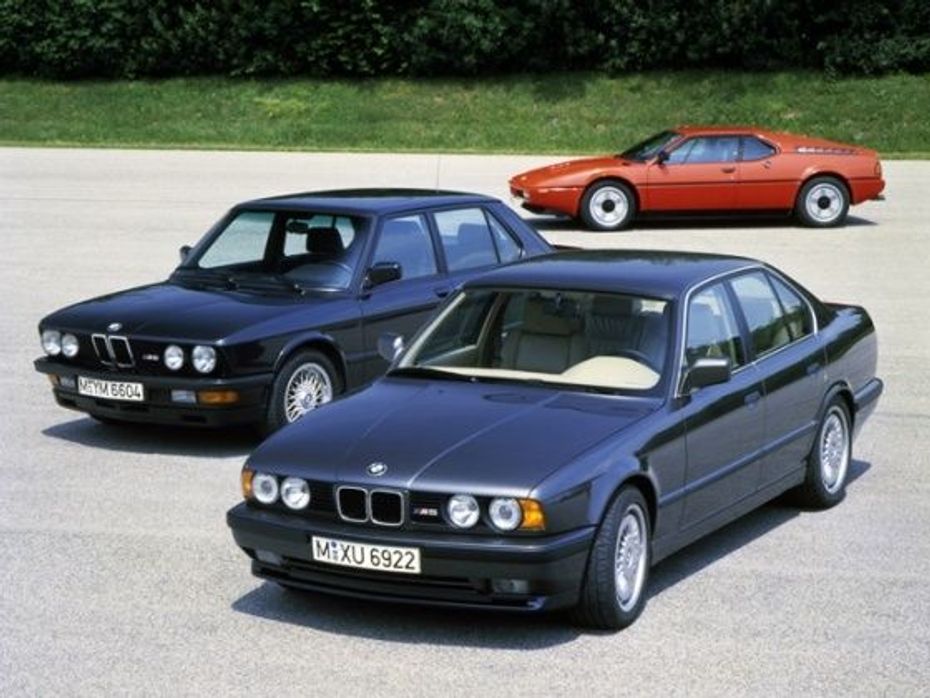
Back in the late 1970s BMW approached Italian supercar maker, Lamborghini to come together and build a racing car. However, Lamborghini went bankrupt before the car could be completed and BMW had to build most of the car themselves. The Bavarian car maker’s motorsport ‘M’ division was called upon for the job of finishing the supercar. The end result was BMW’s first and only supercar, the M1.
Homologation regulations required a manufacturer to produce a certain number of road going versions of a racing car for it to enter various racing championships. BMW introduced a limited number of M1s into the market with a hefty price tag that made it more expensive than the Ferrari 308 GTS, and that was a bad thing for a first time supercar in those days.
Judging by the company’s success on the track BMW’s clientele repeatedly voiced their desire for more performance on the road. Backed by demand the M division setup separate development centres to develop engines and chassis for high performance BMW road cars.
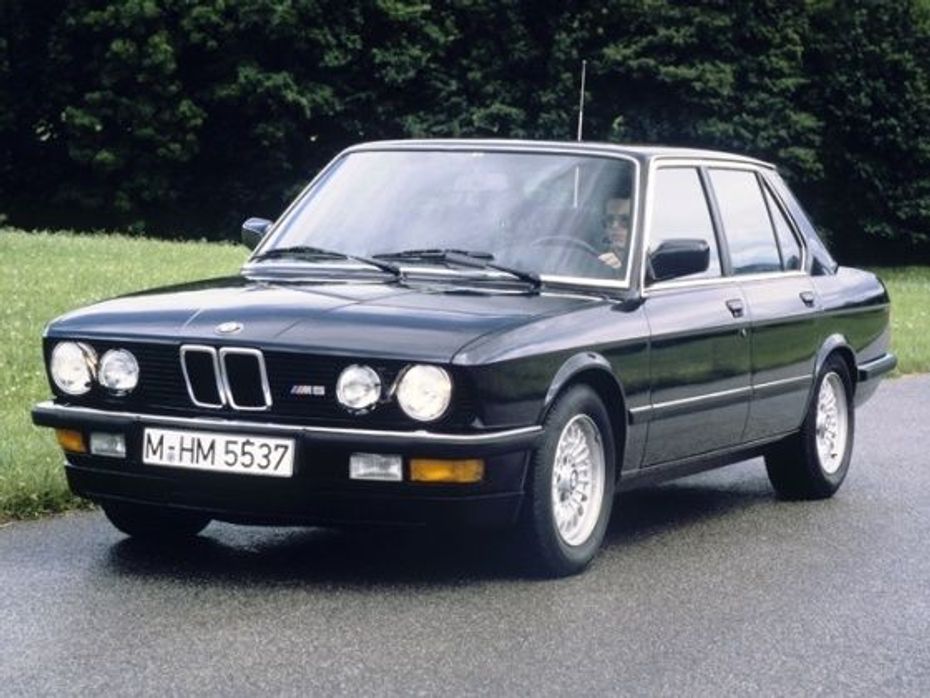
1. BMW M5 (E28) 1985-1988
The first BMW road car to wear the ‘M’ moniker was the BMW M5. The 3.5 litre race derived straight six engine from the M1 was bolted onto BMW’s 5 Series executive luxury sedan. With the M5 BMW created the performance executive sedan segment. A car the competition has been trying to keep up with ever since.
And what a car the M5 was. Based on the second generation BMW 5 Series (E28) sedan, the first ever M5 was showcased for the public at the Amsterdam Motor Show in February of 1984.
With its 3.5 litre straight six engine churning out 289PS of power and 340Nm of torque the E28 M5 was a phenomenon in its time. The luxury sedan went from standstill to 100km/h in a brisk 6.5 seconds and onwards to a top speed of 246 km/h, that’s fast today!
But it wasn’t just the M5’s out and out speed that made it a favourite amongst petrolheads, the drive dynamics of the car were honed to deliver the perfect compromise between a road car and a race car. The steering was precise, the gearbox was a strengthened 5-speed unit form the 5-Series, the rear axle had a differential lock, the suspension was lowered and gas shock absorbers were fitted for better road holding and cornering, high performance brakes with ABS reigned in all the power while special tyres with stiffer sidewalls dealt with the added fury under the bonnet.
The hand built E28 M5 was on the market for three years between 1985 and 1988 and in that time 2,200 cars were sold and in that time it secured the title of ‘World’s fastest sedan’.
All in all the first generation BMW M5 proved to the world that supercar performance with the practicality of a four door luxury sedan and sober looks could be blended beautifully into one car for every need.
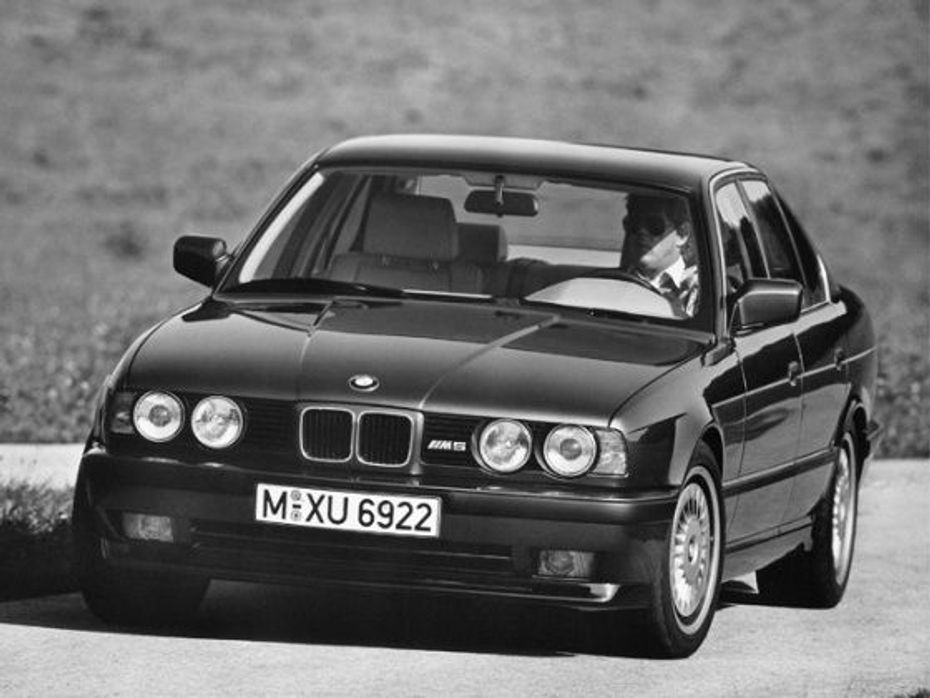
2. BMW M5 (E34) 1989-1995
The second generation BMW M5 unveiled in 1988 upped the ball game with more power. The engine’s size was increased from 3.5 litres to 3.6 litres and power increased to 319PS of power with 360Nm of power. Then in 1992 engine size went up further to 3.8 litres and power output shot up to 345PS of power while the torque figure hit the 400Nm mark.
The 3.6 litre model went from 0-100 km/h in 6.3 seconds and had a top speed of 250 km/h, while the 3.8 had a 0-100 km/h time of 5.9 seconds and a top speed of 280 km/h. By this time electronic speed limiters had kicked in and both top speeds were electronically limited.
BMW’s hand built second generation M5 was given a design makeover that made it look a lot more modern, the car also received lightweight alloy wheels. Under the skin the 3.6 litre version sported a bespoke self-levelling suspension while the 3.8 litre version gained adaptive levelling suspension.
BMW launched an M5 station wagon, in 1992, christened the ‘M5 Touring’ to give the car an even more practical avatar with all the passion and drama of the original high performance super saloon.
In 1996 the M division gave the M5 a six-speed manual transmission and a high-performance compound braking system featuring radial bearings for providing stronger fade free stopping power under high temperatures.
At the end of its tenure the second generation BMW M5 and the M5 Touring together sold 11,000 units in its eight year lifespan.

3. BMW M5 (E39) 1988-2003
BMW’s third generation M5 was launched three years after the introduction of the E39 M5 as BMW thought its top of the line 540i was powerful enough. However, competition from rivals meant a more powerful car is required hence, the E39 M5 was born.
Armed with a 5.0 litre V8 engine developing 405PS of power and 500Nm of torque the third generation M5 could go from 0-100 km/h in 5.3 seconds and had an electronically limited top whack of 250 km/h. The rear-wheel drive V8 engined performance executive saloon also received a new 6-speed manual gearbox.
The BMW E39 M5 was equipped with a sport button increased throttle response and firmed up the steering. Other new age features in the third generation BMW M5 included corona ring headlamps, parking sensors, an improved climate control unit with solar sensors, revised sat-nav unit, rear head protection airbags, and a host of other equipment to raise the luxury aspect of the vehicle.
The 2003 models of the E39 BMW M5 were the best of the lot as all faults with earlier versions were rectified. Apart from being an absolute driver’s car the car was also very well built and is considered to be a classic amongst the vehicle’s fan club.
The third generation M5 was the pinnacle of BMW’s design language before the Chris Bangle designed BMW cars were born.

4. BMW M5 (E60) 2005-2010
The fourth generation BMW M5 at its time of launch suffered criticism for its design. However, that was swept away by the monstrous 5.0 litre V10 engine that developed 507PS of power and generated 520Nm of torque. The naturally aspirated 10 cylinder petrol engine that revved up to 8250 rpm was applauded by petrolheads everywhere.
The most powerful M5 ever could do 0-100 km/h in 4.5 seconds and had a stop speed of 328 km/h.
The E60 BMW M5's V10 engine finished on top of the overall rankings for the 2005 and 2006 Engine of the Year award.
The engine was mated to a seven-speed semi-automatic transmission, there was also a six-speed manual gearbox on offer. The manual cars were slightly slower than the semi-automatics as the stability control could not be fully disengaged. The semi-automatic cars featured launch control to get it off the line as quickly as possible in a drag race.
The E60 M5 was equipped with a power button that lets the driver choose between 400PS of power and 507PS of power depending on driving requirements. And then there was the ‘M’ button on the steering wheel which set the power to 507PS and sharpened up throttle responses to deliver the ‘M’ magic which makes these race derived cars more equal than others.
Apart from the wonderful high revving naturally aspirated motor the E60 M5 was way ahead of its predecessor in terms of technology and equipment. The electronic seats could be adjusted to conform better to your body. The iDrive system was loaded with technology, active headrests, adaptive headlights, cruise control, BMW night vision, there was a head up display to show the speed, the revs and what gear the car is in and the list goes on.
Even though the E60 BMW M5 was a tower of power, towards the end of its life, rivals including the Mercedes Benz E63 AMG, Audi RS6 (C6) and the second generation Cadillac CTS-V were developing more power.
When the performance luxury executive sedan went out of production in 2010, 20,500 units of the 5.0 litre V10 powered M5 had been sold.
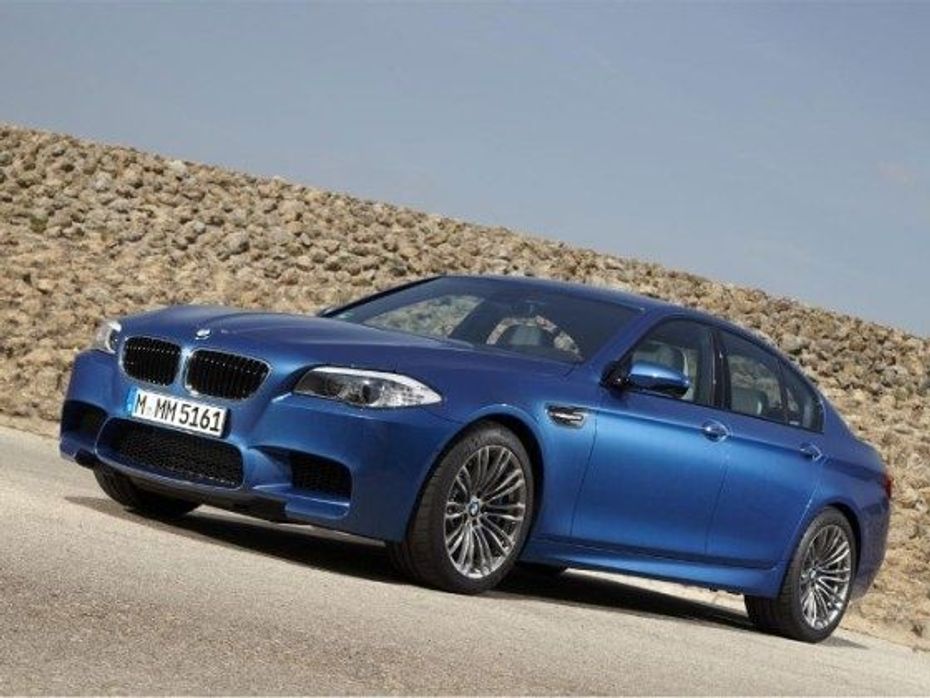
5. BMW M5 (F10) 2011-
Unlike all previous M5s that came with a naturally aspirated engine which delivered that electric response a petrol engine always does, the fifth generation BMW M5 comes with a twin turbocharged engine. While it is true that a turbo charger increases airflow into the engine thereby increasing combustion to raise power delivery, but turbo charged engines have a flaw which has been around ever since the conception of the turbo charger, it’s called turbo lag. BMW claims they have overcome this problem to an almost negligible extent with their new twin scroll turbocharger. The new M5 is said to deliver lag free power delivery from just 1500 rpm.
The engine in question is a 4.4 liter V8 which is smaller than the 5.0 liter V10 engine in the previous M5. But this new engine with its twin turbochargers produces 560PS of power, which is 53 more than the previous car, and 680 Nm of torque which is 160 Nm over the previous car. All this firepower means that the new car is the most powerful M5 ever put into series production. The car goes from standstill to 100 km/h in 4.4 seconds which is .1 seconds faster than the car it replaces and onwards to an electronically limited top speed of 248 km/h, of course one can opt for the 'M' driver's package which ditches the limiter for a top speed of 305 km/h. An interesting fact about the previous M5 is that if you had the limiter removed it would go up to a top speed of 328 km/h. Also, the previous car had a thumping great 5.0 liter V10 which revved to 8250 rpm while the new engine revs to 7200 rpm.
Now, you have to keep in mind that the new M5 has been built keeping in mind concerns about the environment. Hence the smaller turbocharged engine with the two turbo chargers and catalytic converter crammed between the two banks of cylinders. BMW’s seven speed M Double Clutch transmission combined with Auto Start-Stop system and Brake Energy Regeneration have managed to reduce the new M5’s fuel consumption by 30% over the previous car.
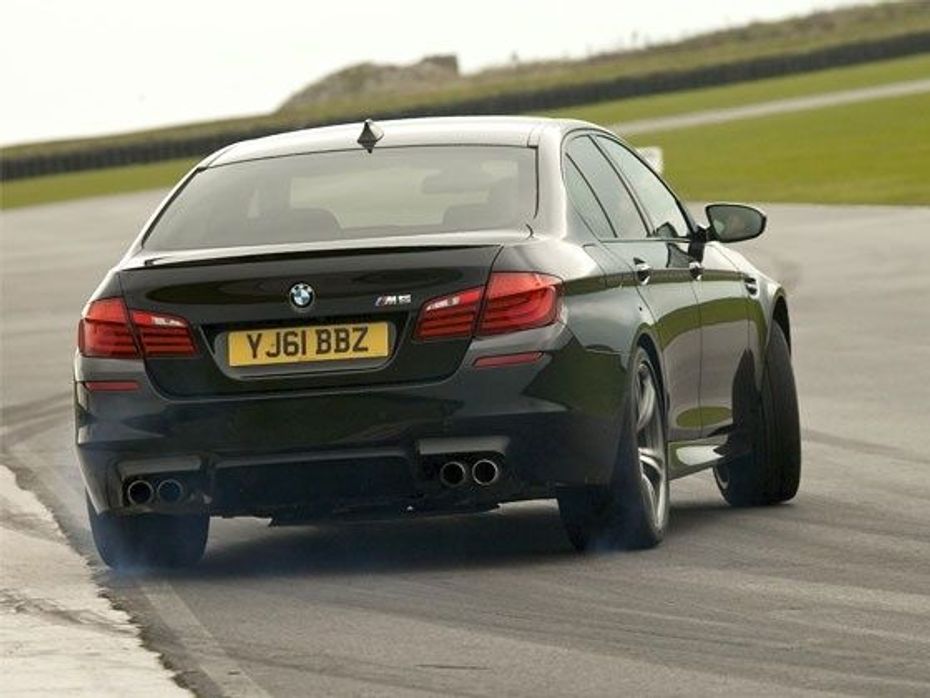
The gearbox can be operated manually in (S) mode and (D) mode will deliver automatic gear changes. The three modes of the gearbox namely, Comfort, Sport and Sport Plus regulate gear change ferocity as your mood might suit. But the new M5 has not just been designed to be an executive performance sedan. Like all other M5s comfort and practicality is of equal importance. As a result there is a low speed assistance function which keeps the car moving smoothly in traffic with just a light touch of the accelerator pedal.
The Fifth Generation M5 comes with BMW’s Active M differential, which is a multi-plate limited slip differential designed to put down the maximum amount of power generated by the engine onto the road. Armed to the teeth with all its various braking functions such as ABS, DSC, Cornering Brake Control, (CBC), Dynamic Brake Control (DBC), Brake Assistant, Brake Fade Compensation, Brake Drying function and Start-off assistant the rear wheel drive performance car has been designed to be as safe as possible. There is one button called the ‘M’ button which can turn off all driver aids and let the driver enjoy what the M5 BMW is all about, an excellent driver’s car.
All BMW M5 cars have been excellent drivers’ cars and each subsequent car has upped the ante for the executive performance sedan. Ever since its birth the only car that could beat an M5 in terms of driver appeal was a new M5. Keeping with the times the new car steps away from the breed with its turbocharged engine, not everyone will favour the move but the new M5 like its predecessors is a properly good car.

BMW Has Commenced Bookings For The Upcoming i5 Luxury EV

BMW i5 M60 XDrive: Bimmer’s First Performance EV Launched In...

BMW iX xDrive50 Launched: Big Range Improvement For Relatively Modest...

Maruti Suzuki Rock N Road: Redefining the SUV Experience

Bosch Car Service: Your Trusted One-stop Destination for Car...

3 New Major Design Details Mahindra XUV 3XO Will Pack Over...

You Can Now Name Skoda India’s Upcoming Sub-4 Metre SUV

Tata Curvv: A Much Clearer Look At Its Interior Ahead Of Its Unveiling

This Tata Car Has Been Announced As The Official Car For IPL 2024

Ford Endeavour And Ranger India Launch Possible WITHOUT Expensive...
India's largest automotive community